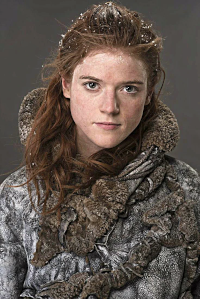 Beyond the Wall, the Free Folk speak in ways as wild as the land they roam. To them, words are not fixed - they grow, change, and evolve like the living world itself. Ygritte, fierce and untamed, laughs as she sets a challenge before Jon Snow:
Beyond the Wall, the Free Folk speak in ways as wild as the land they roam. To them, words are not fixed - they grow, change, and evolve like the living world itself. Ygritte, fierce and untamed, laughs as she sets a challenge before Jon Snow:
In what concerns the continuous evaluation solving exercises grade during the semester, you should submit until 23:59 of April 7th
(this exercise will still be available for submission after that deadline, but without couting towards your grade)
[to understand the context of this problem, you should read the class #05 exercise sheet]
In this problem you should submit a complete program with the main function, reading with functions such as scanf and printing with functions such as printf.
 Beyond the Wall, the Free Folk speak in ways as wild as the land they roam. To them, words are not fixed - they grow, change, and evolve like the living world itself. Ygritte, fierce and untamed, laughs as she sets a challenge before Jon Snow:
Beyond the Wall, the Free Folk speak in ways as wild as the land they roam. To them, words are not fixed - they grow, change, and evolve like the living world itself. Ygritte, fierce and untamed, laughs as she sets a challenge before Jon Snow:
"You think you know our ways? You know nothing, Jon Snow. Watch as our words change - step by step, rule by rule. If you can follow their evolution, maybe you’ll understand us... a little."
Your task is to compute the evolution of a word (made up of just letters 'A' and 'B') showing consecutive generations of it according to the following rules:
For instance, if we start with "A" and ask for 4 generations, the following happens:
n=0: A initial
/ \
n=1: A B the initial single A spawned into AB by rule (A → AB), rule (B → A) couldn't be applied
/| \
n=2: A B A former string AB with all rules applied, A spawned into AB again, former B turned into A
/| | |\
n=3: A B A A B note all A's producing a copy of themselves in the first place, then a B, which turns ...
/| | |\ /| |
n=4: A B A A B A B A ... into an A one generation later, starting to repeat then
The first line of input contain a string S representing the initial word to consider (made only of letters 'A' and/or 'B').
The second line contains an integer K indicating the number of generations to compute.
The output should be contain exactly N+1 lines: the first line contains the initial word S and the following N lines contain the next N generations of that word.
The following limits are guaranteed in all the test cases that will be given to your program:
| 1 ≤ |W| < 10 | Length of the initial word | |
| 1 ≤ K ≤ 10 | Number of generations |
You can be assured that the final generation will not have more than 10&nsbp;000 letters.
| Example Input 1 | Example Output 1 |
A 4 |
A AB ABA ABAAB ABAABABA |
| Example Input 2 | Example Output 2 |
ABBA 3 |
ABBA ABAAAB ABAABABABA ABAABABAABAABAAB |